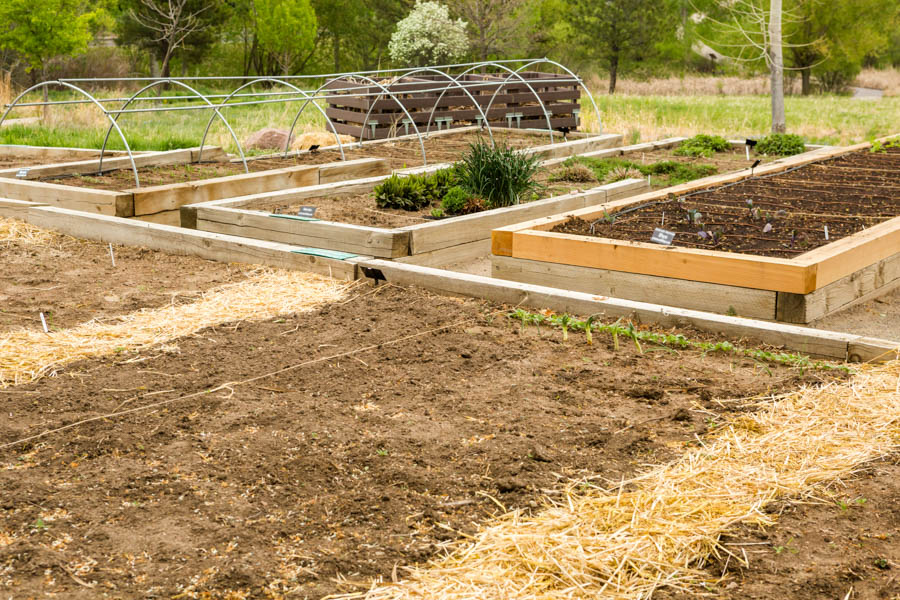Down and Dirty: Tips For Managing Fallow Garden Beds and Containers

Down and Dirty Southern California Gardening
A weekly GardenZeus article series to help gardeners succeed in Southern California’s unique climates and growing conditions.
Post 17: Tips For Managing Fallow Garden Beds and Containers
If we’re focused on what happens aboveground, the summer gardening show may seem over by August or September in many Southern California areas, after the melons and corn are harvested, and when most annual vegetables and flowers are declining, exhausted, going to seed, or dead.
For organic gardeners, soil is the most important living thing in the garden. The microscopic, microbial jungle in healthy soil lives on after garden plants have given up their fruits and flowers. Living soil and soil ecosystems are dynamic, fragile, and precious. What is the best way to manage temporarily fallowed or inactive soil in garden beds and containers until conditions are right for fall planting?
– If you do nothing else, manage weeds. Many weeds go to seed quickly during hot weather or when garden irrigation is reduced or eliminated. Weed seeds may persist for years or decades in soil. During a month or two of weed infestation, thousands or tens of thousands of weed seeds may be released in a home garden. Maintain mulch and remove all weeds before they flower or go to seed.
– Many vegetables and herbs, including carrots, radishes, parsley, borage, oregano, and rosemary continue to provide food for insects in the form of pollen and nectar, and food for wildlife in the form of seeds when their usefulness to humans is past or during seasonally inactive gardening periods. Consider allowing such plants to persist until you’re ready to replant.
– Avoid adding most fertilizers, manures, and amendments, especially any nitrogen fertilizers, to unplanted areas during fallow periods. Nitrogen encourages rapid growth of microbe populations, which may then eat and exhaust available soil organic matter. Once organic matter is exhausted, microbes will eat humus and can “burn up” the fertility of your soil. Add compost and amendments shortly before replanting, or amend soils with fresh “hot” manures that are high in nitrogen up to a few weeks before planting.
– Avoid tilling, rototilling, or turning fallow soil. Specialized helpful microbes live at different layers and levels in soil, and may be harmed or killed by tilling. Tilling also increases oxygen in soil, which may encourage microbial growth and also result in burning out or exhausting soil organic matter. Recently tilled soils tend to dry out quickly, which may destroy many of the soil microbes that survived tilling.
– When removing expired vegetable plants, cut stems at the soil line to leave roots in soil. This provides food for microbes and increases soil organic matter and humus for your next planting season.
– Living plants provide food for soil in the form of exudates that are released from plant roots, and organic matter, such as from dropped leaves and cast-off root hairs. When maintaining beds with unproductive or minimally productive living plants, such as indeterminate tomatoes that may continue bearing sporadically throughout fall, or with perennials such as strawberries, mulch well and provide enough water to prevent wilting.
– Keep bare beds and containers well-mulched, preferably with soft mulches such as straw, leaves, or grass clippings that decay quickly to feed soil, and can be easily removed or worked into soil after several weeks when replanting. Continue to water these areas once or twice per week during the fallow period between summer harvest and late-summer-or-fall planting even when areas are unplanted. Soil organisms need water to survive, and mulch will provide food for microbes.
– If you won’t be replanting vegetables until late winter or spring, consider planting a cover crop after weather cools, such as cereal rye, buckwheat, or clover.
– Fallow periods are the ideal time to plan and prepare for replanting.
“Down and Dirty Southern California Gardening” is a weekly GardenZeus article series in which expert Darren Butler shares more than 20 years of experience about what works and what doesn’t with gardening in Southern California:
Post 16: Remove Chlorine When Watering Organic Gardens (Chlorinated Water, Part 2 of 3)
Post 18: (Coming Soon!) Chloramines and Garden Soil (Chlorinated Water, Part 3 of 3)
All articles in this series: Down and Dirty Southern California Gardening
Enter your California zip code for customized advice by plant